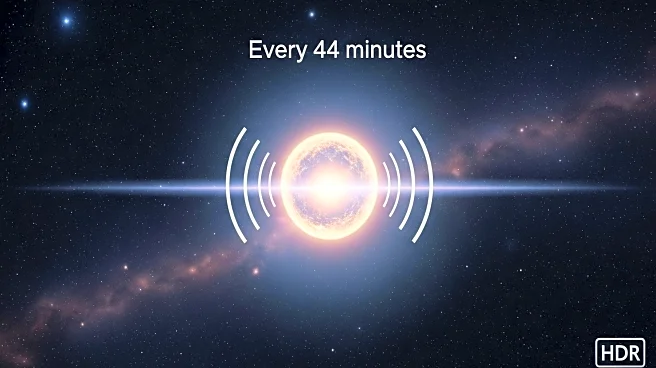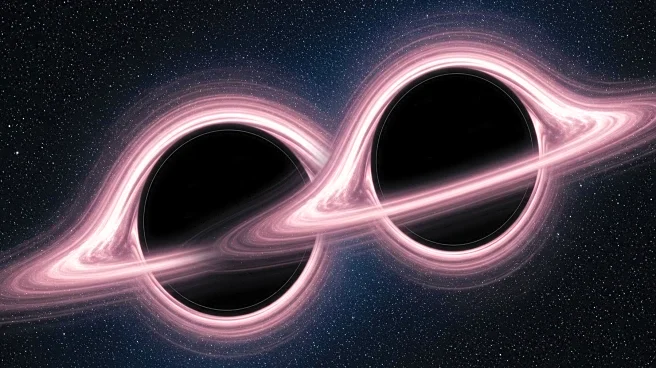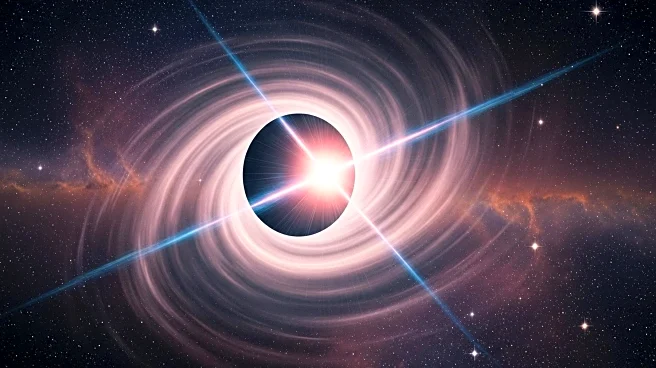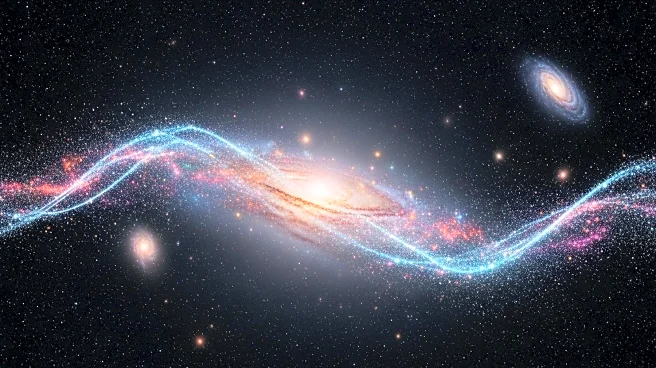What's Happening?
An international team of astronomers has captured a highly detailed image of the core of the distant galaxy OJ 287, located about five billion light years from Earth. Led by Dr. Efthalia Traianou of Heidelberg University, the researchers used a space-based radio telescope to reveal a sharply curved section of a plasma jet streaming from the galaxy's center. This discovery provides new insights into the extreme environments surrounding supermassive black holes. OJ 287 is classified as a blazar, known for its intense energy and brightness, with a supermassive black hole at its core.
Why It's Important?
The detailed image of OJ 287's core offers valuable information about the behavior and composition of plasma jets emitted by supermassive black holes. Understanding these jets can shed light on the dynamics of black holes and their influence on galaxy formation and evolution. The research also supports the hypothesis of a binary supermassive black hole within OJ 287, which could provide insights into gravitational waves and black hole mergers. This study exemplifies the power of international collaboration in advancing astronomical research.
Beyond the Headlines
The findings highlight the potential for using advanced imaging techniques to explore distant galaxies and uncover hidden structures. The study also raises questions about the role of supermassive black holes in shaping the universe and the implications for our understanding of cosmic phenomena. As technology continues to evolve, astronomers will be able to explore deeper into the universe, potentially uncovering new mysteries.











